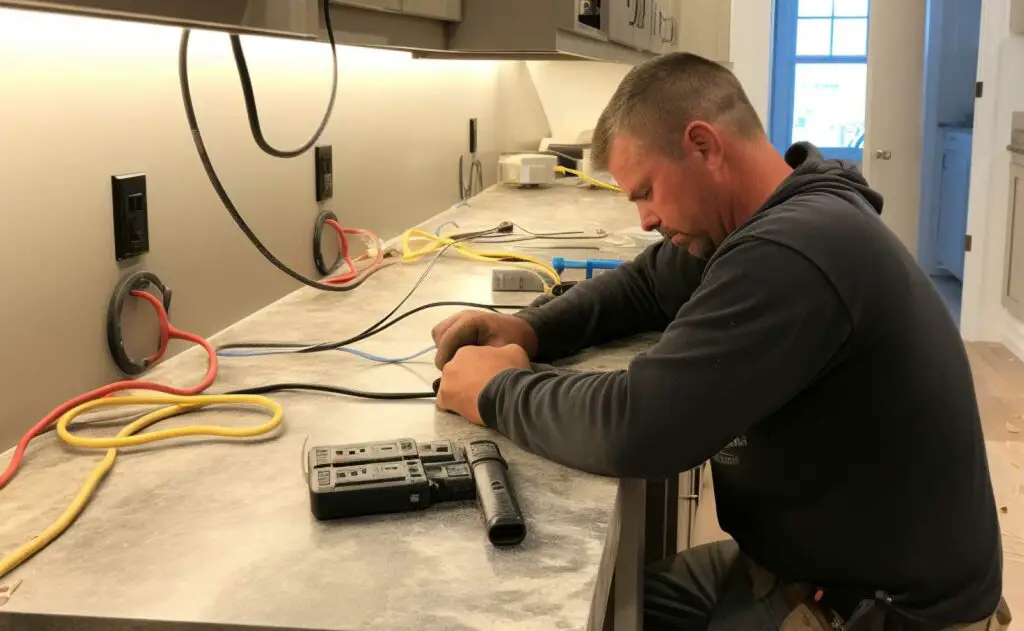In this deep dive, we’re demystifying the age-old debate: “Can I Replace a GFCI Outlet with a Regular Outlet?” Whether you’re a DIY enthusiast, a homeowner looking to get a quick fix in place, or anyone else who needs to replace a GFCI outlet and thinking about doing that with a standard outlet, this is THE guide you’ve been searching for.
Now, you might be thinking, “Is it even possible to make this kind of a switch?” or “How does this impact the safety of my home?”
So what the deal – can you replace a GFCI outlet with a regular one?
Yes, technically, you can replace a GFCI outlet with a regular outlet. However, GFCI (Ground Fault Circuit Interrupter) outlets are designed for specific safety purposes, primarily in areas where water is present, such as bathrooms, kitchens, and outdoor locations. Before considering a replacement, it’s essential to understand the safety implications and potential local building codes that mandate the use of GFCI outlets in certain areas. Always prioritize safety and consult with a professional electrician if unsure.
These are crucial questions. For some, a simple yes or no might suffice. But for the vast majority of us, we’re hungry for specifics.
Crunchy details like: What makes GFCI outlets so unique? Why are they installed in certain parts of our homes? And, most importantly, what are the steps and safety precautions to be aware of during the replacement process?
All these burning questions and more will be unraveled. So, whether you’re a property flipper, a DIY lover, or just someone intrigued by home improvement intricacies, strap in. We’re about to electrify your knowledge on outlets like never before.
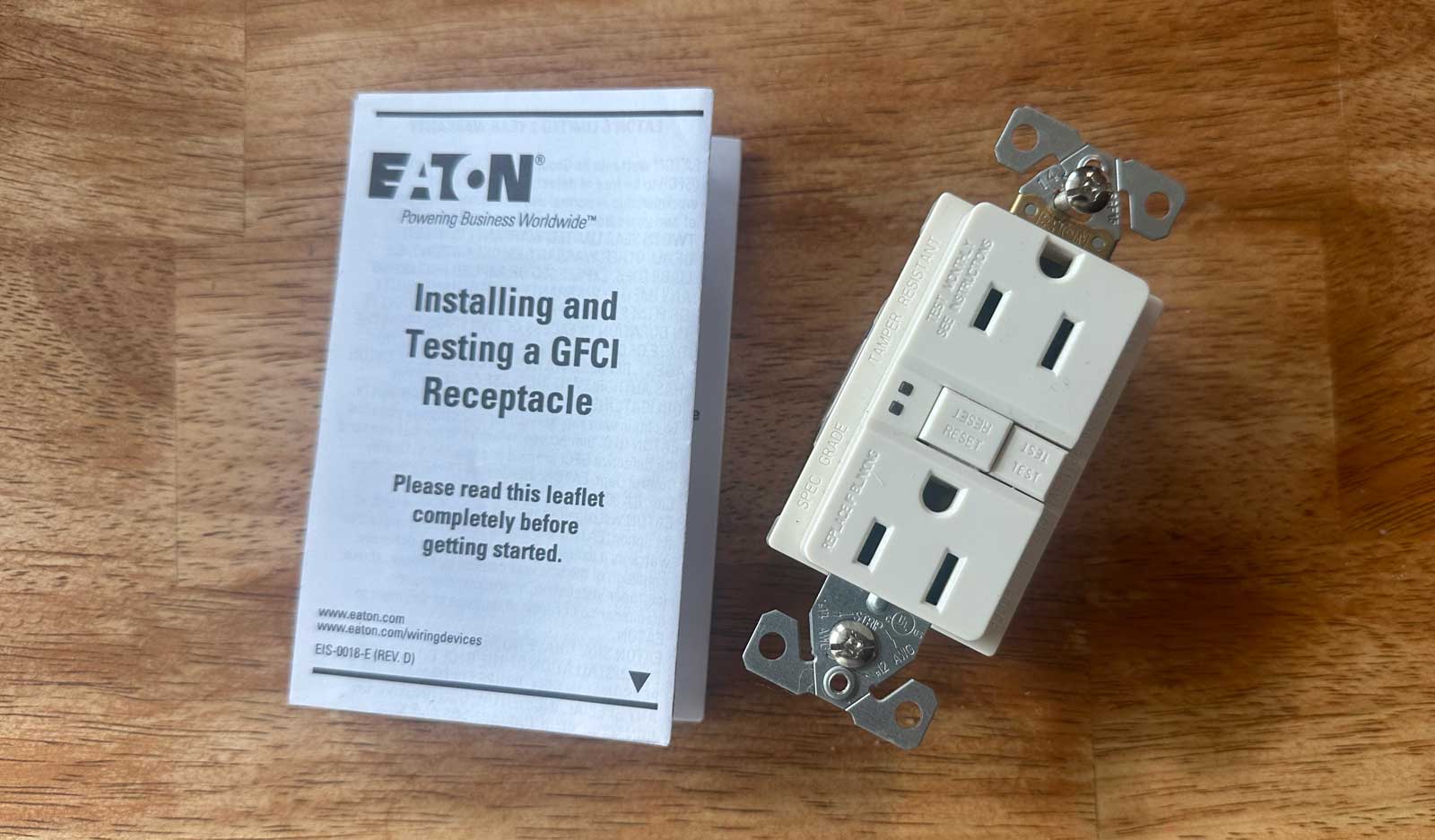
Understanding GFCI and Regular Outlets
Have you ever wondered about the differences between GFCI and regular outlets? Are you considering swapping one for the other? Let’s dive deep into understanding what each outlet does and how they function in our homes.
Ground fault circuit interrupters (GFCI) are a special type of outlet designed to protect people from electrical shock hazards. GFCI receptacles monitor imbalances in the current flowing through a circuit. When an imbalance is detected, the GFCI device trips and cuts off the power, saving you from potential harm. These outlets are typically installed in areas where water and electricity are in close proximity, such as kitchens, bathrooms, and outdoor spaces.
On the other hand, regular outlets (also known as standard, normal, or typical outlets) are the most common type of electrical outlet found in residential and commercial settings. Standard outlets don’t possess the safety features of a GFCI receptacle, making them a more straightforward option when there’s no risk of water exposure. They provide power for everyday plug-in devices and appliances but lack the ground-fault protection needed in specific environments.
To further understand the visual difference, GFCI outlets can be identified by their “test” and “reset” buttons, whereas regular outlets don’t have these buttons. GFCI receptacles can also prevent accidental shocks by stopping the flow of electricity if a curious child inserts an object into the outlet.
Swapping out a GFCI outlet for a regular one might seem like an enticing option. However, it’s important to weigh the pros and cons before making such a decision. The good news is, both types of outlets can be found in various styles and colors to match your interior without compromising aesthetics.
It’s crucial to remember that due to GFCI’s advanced safety features, it’s generally not recommended to replace them with regular outlets. GFCI devices are specifically designed to protect against electrical hazards in areas where accidents are most likely to occur. In some cases, swapping them out for regular outlets may result in violation of building and electrical codes in your area.
In conclusion, understanding the differences and purposes of GFCI and standard outlets will help you make a more informed decision about their correct and safe use in your home. Let your safety and the safety of your loved ones be the key factors when deciding between GFCI and regular outlets.
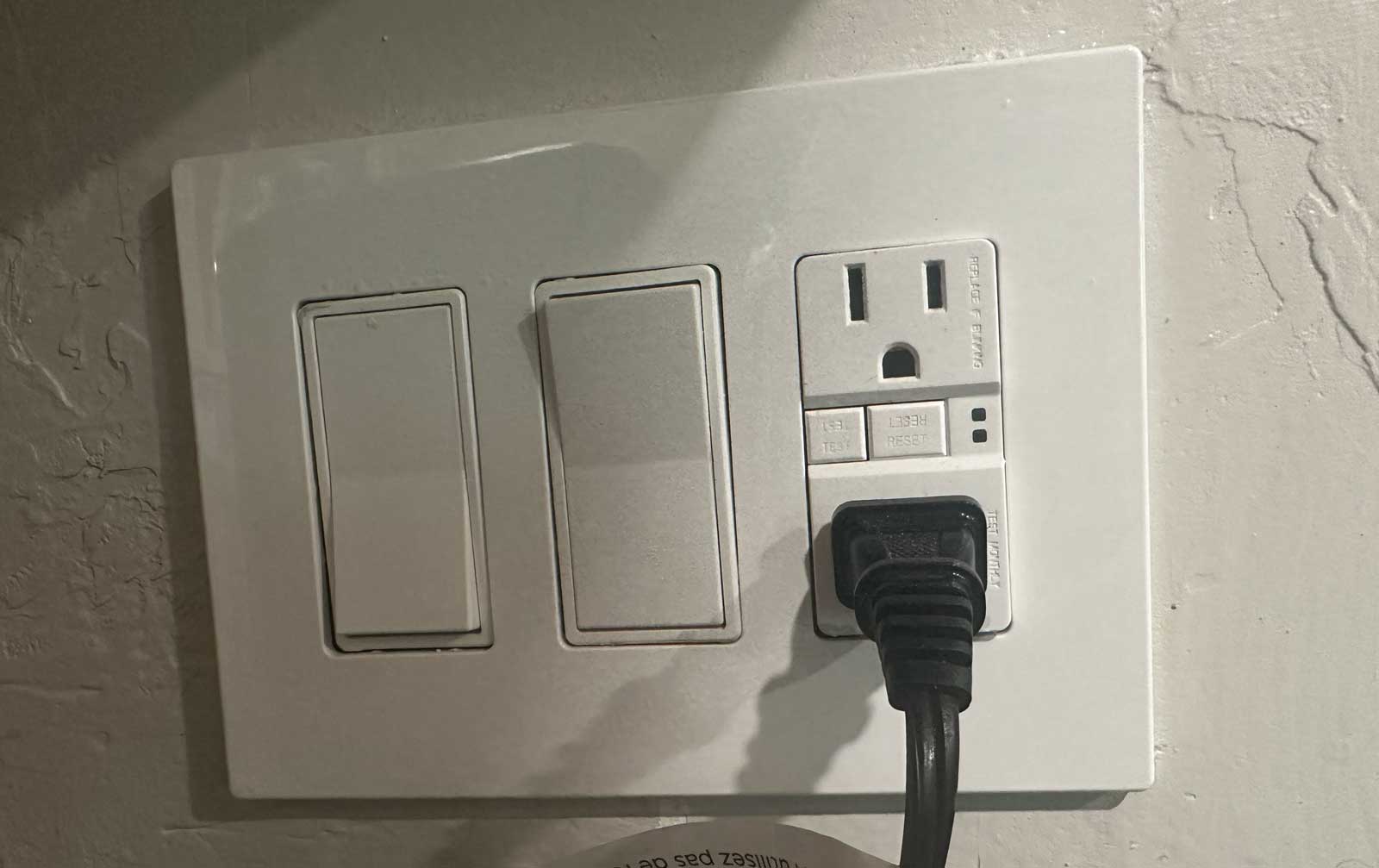
The Importance of GFCI Outlets
You’re home, enjoying a peaceful evening, blissfully unaware of the potential hazards lurking behind your electrical outlets. That’s right, electrical shocks from regular outlets are a serious concern, but fortunately, there’s a solution: GFCI outlets. In this section, we’ll dive into the importance of GFCI outlets and why swapping them out for regular outlets may not be the best idea.
GFCI (Ground Fault Circuit Interrupter) outlets are specifically designed to protect you from electrical shocks by cutting off the power supply in the event of a ground fault. Electrical shocks can occur for a multitude of reasons, such as damaged wiring, water exposure, or simply touching an electrical outlet with wet hands. Installing GFCI outlets in your home is a crucial step towards electrical safety.
These outlets continuously monitor the electrical current and detect irregularities, such as fluctuations or imbalances. When a ground fault occurs, the GFCI outlet acts as a vigilant guardian, tripping itself off within milliseconds to prevent electric shocks. In fact, GFCI protection is often required by building codes in areas where there’s increased risk of water exposure, like kitchens, bathrooms, and outdoor spaces.
Swapping out a GFCI outlet for a regular outlet might seem like an easy and cost-effective solution, but it’s important to understand the potential risks. Eliminating GFCI protection could leave you vulnerable to electric shocks and even electrical fires. Safety should always be a top priority when it comes to your home’s electrical system.
Electric shock injuries can range from mild tingling sensations to severe burns, life-threatening heart issues, and even death. When I was younger, I experienced a minor electric shock just by trying to plug in a device with wet hands. It’s not something you want to risk, trust me. Emphasizing the use of GFCI outlets is a solid investment in your own and your loved ones’ safety.
In conclusion, rethinking the decision to replace GFCI outlets with regular outlets is essential for maintaining proper electrical safety in your home. GFCI protection is a vital component in preventing electric shocks and ensuring your living spaces remain secure and hazard-free. So, the next time you find yourself considering the switch, remember the invaluable protection GFCI outlets provide.
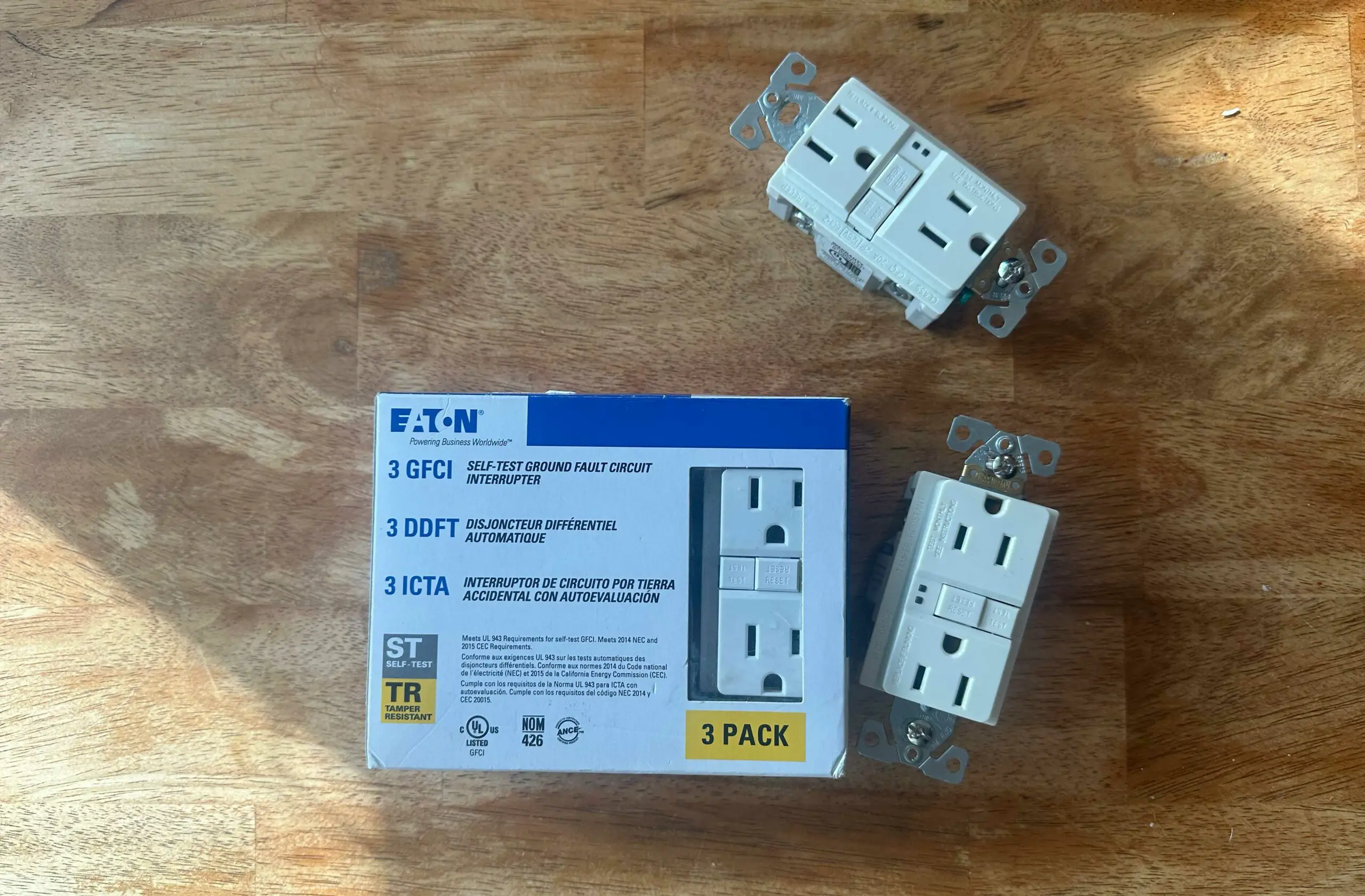
Where GFCI Outlets are Typically Installed
Imagine stepping out of the shower and reaching for an electrical device, only to experience a painful shock. That unpleasant scenario can be avoided by installing ground fault circuit interrupters (GFCI) in certain areas within your home. So, where should you install these safety-enhancing outlets? Let’s find out!
GFCIs are most commonly found in locations where water is present or potentially present, decreasing the risk of electric shock. Some common areas in your house where you might consider installing GFCI outlets include:
- Laundry rooms: Appliances like washing machines and utility sinks can cause water to splash, creating a potential hazard. Installing a GFCI outlet in this area helps protect you and your family from unexpected shocks.
- Older homes: If you live in an older home, it’s likely that it wasn’t originally equipped with GFCI outlets. Updating your electrical system to include these safety features is a smart move to help prevent accidents.
- Unfinished basements: Unfinished basements tend to be damp, and moisture can make electrical systems more dangerous. Installing GFCI outlets ensures a safer environment when working in your basement.
- Outdoor outlets: Weather conditions, such as rain, can create hazardous situations when using outdoor electrical equipment. An outdoor GFCI outlet can provide extra protection and peace of mind in these circumstances.
- Damp areas: Places like bathrooms, kitchens, and garages are often exposed to water or humidity, increasing the risk of electric shock. GFCI outlets in these areas help protect you, your family, and your appliances from harm.
- Wet bars: Similar to kitchens and bathrooms, wet bars can become a dangerous combination of water and electricity. With a GFCI outlet installed, you can safely enjoy your home bar without worrying about potential accidents.
- Wet locations: Pools, hot tubs, and similar features present unique hazards when it comes to electricity. Make sure any electrical outlets near these locations are GFCI outlets to ensure the safest possible environment.
In my experience, swapping out your standard outlets for GFCI outlets in these locations is a simple yet effective way to protect yourself and your home from potential electrical hazards. But remember, it’s essential to consult an electrician or a professional installer for proper guidance and installation.
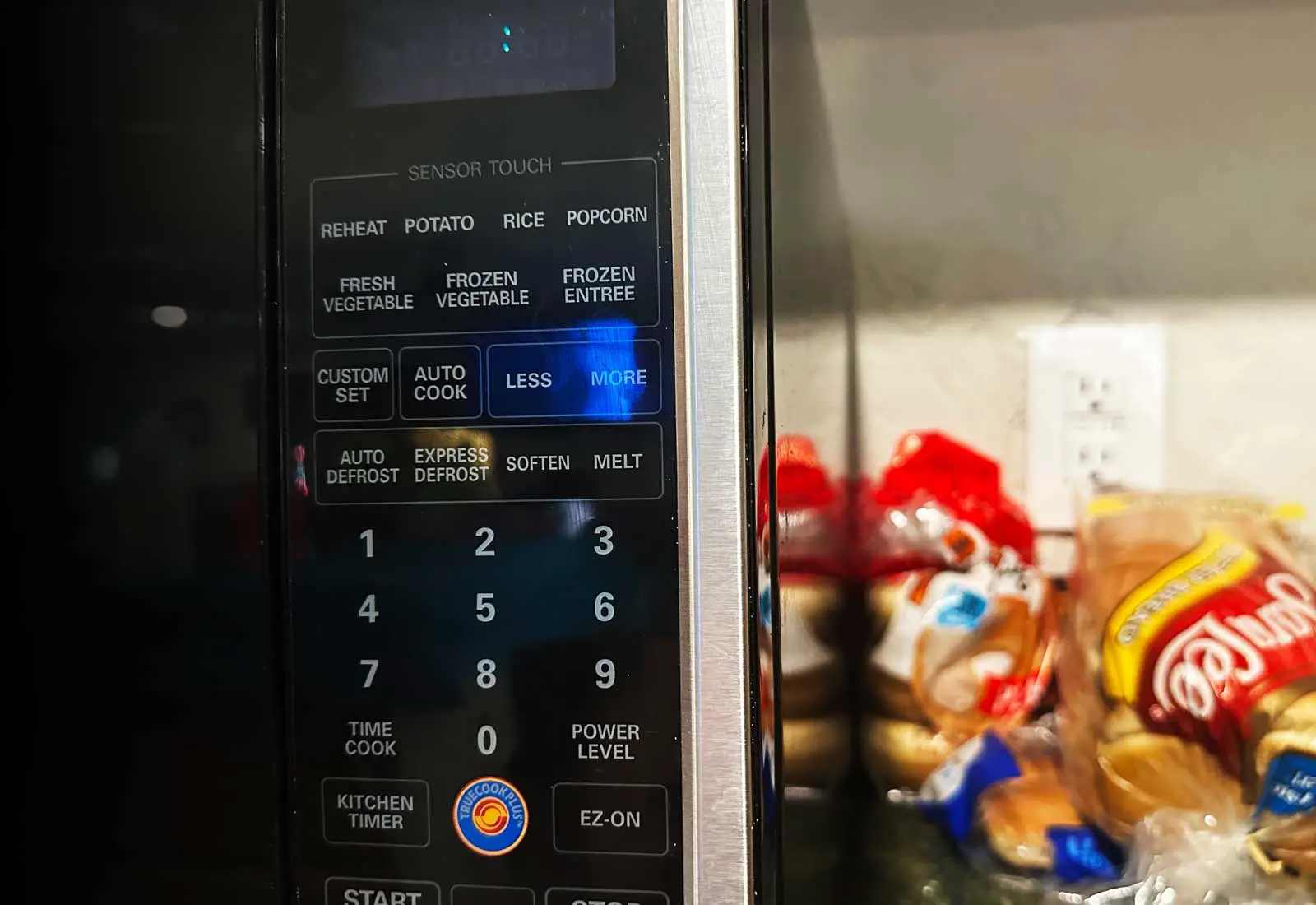
Understanding Electrical Wiring for Outlets
You’re curious about replacing a GFCI outlet with a regular one, and it’s essential to understand the electrical wiring for outlets. In this section, we’ll discuss the basics of how electrical wiring works, and the different types of wires that make an outlet function correctly. You’ll gain the knowledge you need to make an informed decision about replacing your GFCI outlets.
Electrical wiring in outlets involves various wires, including white wires, black wires, and bare copper ground wires. The white wires are neutral wires, while the black wires are hot wires. These wires play a significant role in providing a safe and stable flow of electricity to the outlets.
When it comes to the number of wires in an outlet, there are typically three. The black (hot) wire, the white (neutral) wire, and the bare copper ground wire. The hot wire carries electricity to your devices, while the neutral wire returns the current to the source. The bare copper ground wire serves as a safety measure, providing an alternative path for electrical current in case of a fault.
In addition to the basic wire types, electrical wiring also involves load wires. These are the outgoing power wires that travel down the circuit to the next device. Understanding the difference between line and load wires is crucial for installing or replacing outlets correctly, including identifying whether you can replace a GFCI outlet with a regular one.
As a friendly reminder, working with electrical wiring can be hazardous if you’re inexperienced or unsure about the process. In my experience, it’s always best to consult with a licensed electrician before attempting any electrical projects.
So, now that you have a better understanding of electrical wiring for outlets, you’ll be able to make better decisions regarding GFCI and regular outlets. Remember, safety is always a priority, and it’s essential to know what you’re doing (or consult with a professional) to ensure a successful outcome.
The Replacement Process
You might be wondering if you can replace a GFCI outlet with a regular outlet. Well, you’re in luck! In this section, we’ll walk you through the replacement process step by step. So, grab your tools and let’s get started!
First, you’ll need to purchase a new outlet that matches the specifications of your existing GFCI outlet. It’s essential to make sure the new outlet is compatible with your electrical system to ensure proper functionality and safety.
The first thing you need to do is turn off the power at the breaker box to ensure your safety while working with electrical wiring. Once you’re sure the power is off, you can approach the existing outlet and remove the old GFCI outlet. To do this, unscrew the outlet cover and carefully detach the wires connected to the receptacle.
With the old outlet removed, it’s time to get acquainted with the wiring. You’ll notice the ‘line’ wires which connect to incoming power from the breaker box, and the ‘load’ wires, responsible for outgoing power towards other outlets or appliances. Make a mental note of these wires, as you’ll need to connect them to the new outlet.
Next step, installation! Start by attaching the line and load wires to your new outlet, following the manufacturer’s guidelines for proper connection. Then, screw the new outlet into position within the electrical box.
Once you’ve done this, secure the new outlet cover in place and give yourself a little pat on the back. You’ve just successfully replaced a GFCI outlet with a regular outlet!
During the process, it’s important to stay focused and work with precision (I found that taking a deep breath before tackling the wiring helped). Don’t forget your insulated screwdriver and other necessary tools.
Keep in mind that the purpose of a GFCI outlet is to protect against electrical shocks, particularly in areas where water is present. Replacing a GFCI outlet with a regular outlet is not recommended in kitchens, bathrooms, and other wet areas for safety reasons. However, if you feel confident in your ability and understand the risks involved, you can now replace a GFCI outlet with a regular one.
Remember, safety is the number one priority when working with electricity. Always be careful, double-check your work, and consult a professional if you’re uncertain about any part of the process. Good luck with your outlet replacement project!
Tools and Materials Required
You’ve decided to replace a GFCI outlet with a regular one. Smart move! Before you get started, make sure you have the right tools and materials on hand. This will make the process smoother and help you get the job done efficiently.
First things first—you’ll need an outlet tester and a voltage tester to ensure safety during the installation process. These handy devices will help you identify any electrical issues and avoid potential hazards.
Next up, gather your screwdriver, pliers, and electrical tape. These will come in handy when you’re disconnecting the old outlet and installing the new one.
Now let’s talk about the outlet itself and the screws you’ll need. Make sure the new outlet box is compatible with your existing wiring and intended location. As for screws, there are a few different types to be aware of:
- Silver screws: These are for connecting neutral wires, which are typically white.
- Brass screws: Designed for hot wires, which are usually either black or red.
- Gold screws: Basically the same as brass screws, but with a more polished finish. They also connect hot wires to the outlet.
- Green screws: Specifically for grounding wires, ensuring the outlet is safe and connected to the earth.
You’ll also want to have some terminal screws on hand for securing the wires in their respective locations.
In my experience, it’s helpful to lay out all your tools and materials ahead of time, making sure everything is within reach before starting the replacement process. This way, you won’t be left scrambling for that elusive screwdriver or missing roll of electrical tape when you’re in the thick of it.
Armed with these tools, materials, and a bit of patience, you’re well on your way to successfully replacing your GFCI outlet with a regular one. Remember to always prioritize safety and follow proper procedures—soon enough, you’ll have a job well done. Good luck!
Step by Step Replacement
You’re ready to tackle the task of replacing a GFCI outlet with a regular outlet, but you might be wondering how to approach it. Don’t worry, we’ve got you covered! In this section, we’ll provide a step by step guide to help you safely and efficiently swap out your old GFCI outlet for a new one. Let’s dive in.
Before you start, be sure to gather the necessary tools: a screwdriver, electrician’s pliers, an outlet tester, and of course, the regular outlet you want to install. Remember, safety first! Always turn off the power to the circuit at the electrical panel before you begin.
Once you’ve switched off the power, use an outlet tester to confirm that the electrical circuit is indeed off. Next, remove the cover plate from the GFCI outlet, then unscrew the GFCI receptacle from the junction box. Detach and separate the wires attached to the receptacle, paying close attention to their labels or markings so that you can reattach them correctly to the new outlet.
When dealing with GFCI outlets, it’s crucial to identify the “line” and “load” terminals. The “line” wires are the incoming power from the circuit breaker box, while the “load” wires provide outgoing power to the rest of the electrical circuit. You’ll need to connect the line wires to the line side of the new regular outlet, and the load wires to the load side.
After you’ve connected the wires to the new regular outlet, carefully push the outlet back into the junction box and secure it with screws. Replace the cover plate, and you’re nearly done!
Before you switch the power back on, double-check all of your connections to ensure proper installation. Lastly, turn the power back on at the electrical panel and use your outlet tester to confirm that your new regular outlet is functioning correctly. If everything is set up properly, you’re in business!
In my experience, replacing a GFCI outlet with a regular one can be a straightforward process if you take the time to carefully follow each step and prioritize safety throughout the procedure. So go ahead, pat yourself on the back—you’ve just successfully replaced your GFCI outlet with a regular one!
Safety Precautions
Before diving into the process of replacing a GFCI outlet with a regular outlet, it’s crucial to understand the safety precautions involved (don’t worry, we’ve got you covered). In this section, we’ll discuss the National Electrical Code, local building codes, and other essential safety measures to ensure a successful and hazard-free project. Ready to get started? Let’s go!
The National Electrical Code (NEC) sets safety standards for electrical work across the United States. This code requires GFCI outlets in areas near water sources, such as kitchens and bathrooms, to protect against electrical faults and reduce the risk of electric shock. When considering replacing a GFCI outlet with a regular outlet, check if your electrical system complies with the NEC and if local building codes have additional requirements. Remember, safety is the top priority, and violating these codes could result in electrical problems or pose a severe risk to you and your loved ones.
Before you start any electrical work, turn off the power at the main breaker box to eliminate the risk of electrical shock. Additionally, use insulated tools such as screwdrivers, electrician’s pliers, and non-contact voltage testers to ensure your safety while working around electrical current. Trust me, your fingers will thank you later!
While working on your electrical outlets, thoroughly inspect your electrical devices for any signs of wear, damage, or frayed wires. Also, ensure correct wire connections and properly functioning components. If you notice any electrical issues, address them immediately to avoid future electrical problems. In my experience, addressing potential issues head-on saves a lot of trouble in the long run.
In conclusion, replacing a GFCI outlet with a regular outlet requires careful consideration of safety precautions, adherence to National Electrical Code and local building codes, and a thorough inspection of your electrical system. Following these guidelines will help ensure a safe and successful DIY project, while also promoting a safe and efficient electrical system in your home. Remember, electrifying adventures await you—but only if safety comes first!
When to Seek Professional Help
You might be wondering if you can tackle this project all by yourself. But wait, have you considered the hidden risks involved with replacing a GFCI outlet with a regular one? Allow me to walk you through some scenarios when calling a professional is the best course of action.
In my experience, electrical projects are best left to qualified and licensed electricians. While the thought of saving a few bucks might sound tempting, think about the potential dangers involved. An improper switch between a GFCI outlet and a standard receptacle might lead to expensive repairs down the line, not to mention the risk of electrical shock. So, if you’re unsure of your abilities or the consequences of your actions, picking up the phone and calling a pro doesn’t sound like such a bad idea now, does it?
You’ll also want to consult an expert if your electrical setup seems complicated. For instance, if you’re dealing with a high-demand appliance like a sump pump, or if you notice a tangled web of extension cords snaking around your house – it’s time for a licensed electrician to step in. They’ll be able to assess the needs of your appliances and ensure everything is properly installed, mitigating any additional costs or hazards.
It’s important to remember that safety should always come first. You don’t want your DIY attempt at replacing an outlet to result in house-wide electrical issues or, worse, a fire. So next time you contemplate replacing a GFCI outlet with a standard one, ask yourself: “Is this a job best left to the professionals?”
Remember, a confident and knowledgeable pro provides a clear and neutral point of view, ensuring your home’s electrical system remains safe and in top condition. So, look out for these warning signs and don’t hesitate to seek professional help when necessary. After all, your safety and peace of mind are worth more than the few dollars you might save attempting the switch on your own.
Additional Considerations
When deciding whether to replace a GFCI outlet with a regular outlet, there are several important factors to keep in mind. In this section, we’ll dive into some of these considerations and offer practical insight for a safe and functional setup in your home. Let’s take a closer look.
Replacing a GFCI outlet with a regular outlet might not be a good idea in certain situations, especially if it’s protecting an entire circuit or located near a water source. GFCI outlets are designed to protect against electrical shocks caused by ground faults, such as short circuits. In places where water is present, the risk of short circuits is higher, and using a GFCI outlet becomes crucial.
A GFCI outlet can protect multiple electrical appliances, such as those in your living room or kitchen. Removing a GFCI outlet can potentially leave these appliances unprotected, leading to a greater risk of electrical shocks, fires, or damage to the devices.
Take, for example, using a hair dryer near a bathroom sink. GFCI outlets detect imbalances in the electrical current and quickly trip the circuit if needed. Without this protection, a short circuit caused by a hair dryer could have serious consequences.
The reset button and the test button on the GFCI outlet are essential components that help ensure the outlet is functioning correctly. Regular outlets do not have these reset buttons, leaving you without a way to quickly restore power in the event of a short circuit.
That being said, when considering the replacement, proper installation and maintenance of GFCI outlets are key. If a GFCI outlet isn’t working correctly, it won’t provide the protection you need. So, be sure to test your GFCI outlets regularly and address any issues immediately.
In conclusion, while it may seem like a simple switch, replacing a GFCI outlet with a regular outlet requires careful consideration and an understanding of the safety implications. By keeping these points in mind, you’ll be better equipped to make informed decisions when it comes to your home’s electrical setup.
